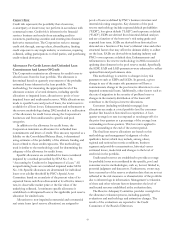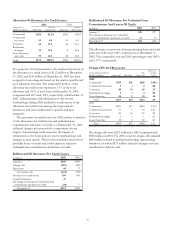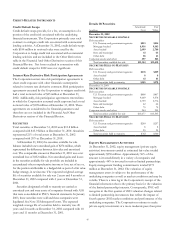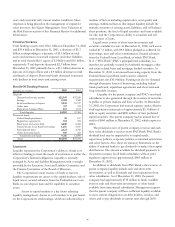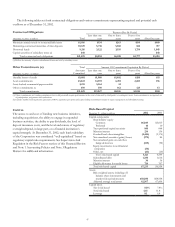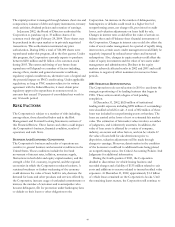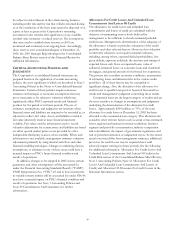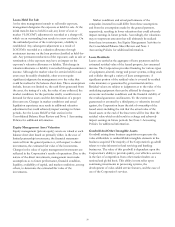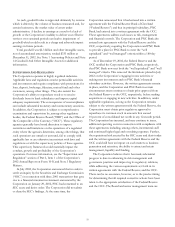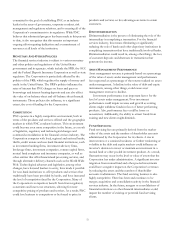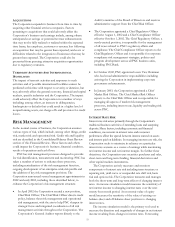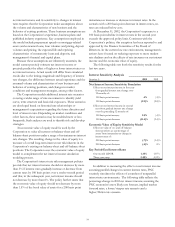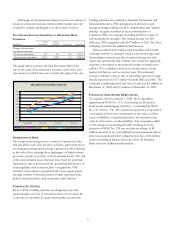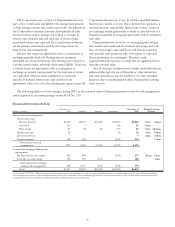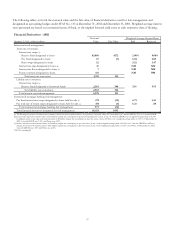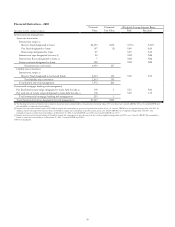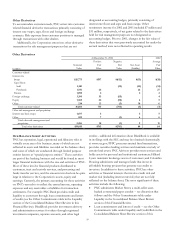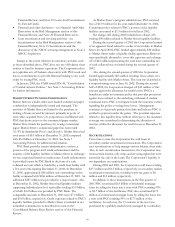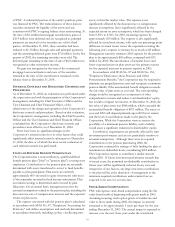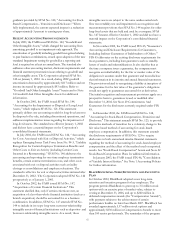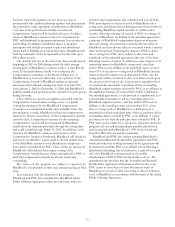PNC Bank 2002 Annual Report Download - page 55
Download and view the complete annual report
Please find page 55 of the 2002 PNC Bank annual report below. You can navigate through the pages in the report by either clicking on the pages listed below, or by using the keyword search tool below to find specific information within the annual report.53
ACQUISITIONS
The Corporation expands its business from time to time by
acquiring other financial services companies. Factors
pertaining to acquisitions that could adversely affect the
Corporation’s business and earnings include, among others:
anticipated cost savings or potential revenue enhancements
that may not be fully realized or realized within the expected
time frame; key employee, customer or revenue loss following
an acquisition that may be greater than expected; and costs or
difficulties related to the integration of businesses that may be
greater than expected. The Corporation could also be
prevented from pursuing attractive acquisition opportunities
due to regulatory restraints.
TERRORIST ACTIVITIES AND INTERNATIONAL
HOSTILITIES
The impact of terrorist activities and responses to such
activities and of possible international hostilities cannot be
predicted at this time with respect to severity or duration, but
may adversely affect the general economy, financial and capital
markets, specific industries and the Corporation. The impact
could adversely affect the Corporation in a number of ways
including, among others, an increase in delinquencies,
bankruptcies or defaults that could result in a higher level of
nonperforming assets, net charge-offs and provision for credit
losses.
RISK MANAGEMENT
In the normal course of business, the Corporation assumes
various types of risk, which include, among other things, credit
risk, market risk and operational risk. Credit risk and liquidity
risk are described in the Consolidated Balance Sheet Review
section of this Financial Review. These factors and others
could impact the Corporation’s business, financial condition,
results of operations and cash flows.
PNC has risk management processes designed to provide
for risk identification, measurement and monitoring. PNC has
taken a number of actions to enhance these processes,
including centralization of the risk management function,
ongoing development of an enterprise-wide risk profile and
the addition of key risk management positions. The
Corporation announced several management appointments in
2002 and early 2003, including those described below, to
enhance the Corporation’s risk management structure.
• In April 2002 the Corporation created a new position,
Chief Risk Officer. The Chief Risk Officer directs credit
policy, balance sheet risk management and operational
risk management, with the aim to help PNC sharpen its
strategic focus and integrated coordination of all risk
management activities throughout the Corporation. The
Corporation’s General Auditor reports directly to the
Audit Committee of the Board of Directors and receives
administrative support from the Chief Risk Officer.
• The Corporation appointed a Chief Regulatory Officer
effective August 1, 2002 and a Chief Compliance Officer
effective October 1, 2002. The Chief Regulatory Officer, a
newly-created position, is responsible for the management
of all issues related to PNC’s regulatory affairs and
compliance. The Chief Compliance Officer reports to the
Chief Regulatory Officer and is responsible for corporate
compliance risk management strategies, policies and
program development across all PNC business units,
including PNC Bank.
• In October 2002, PNC appointed a new Vice Chairman
who has broad administrative responsibilities including
assisting the Corporation in implementing corporate
governance enhancements.
• In January 2003, the Corporation appointed a Chief
Market Risk Officer. The Chief Market Risk Officer
reports to the Chief Risk Officer and is responsible for
managing all aspects of market risk management
processes, including interest rate, liquidity and trading risk
across PNC.
INTEREST RATE RISK
Interest rate risk arises primarily through the Corporation’s
traditional business activities of extending loans and accepting
deposits. Many factors, including economic and financial
conditions, movements in interest rates and consumer
preferences affect the spread between interest earned on assets
and interest paid on liabilities. In managing interest rate risk, the
Corporation seeks to minimize its reliance on a particular
interest rate scenario as a source of earnings while maximizing
net interest income and net interest margin. To further these
objectives, the Corporation uses securities purchases and sales,
short-term and long-term funding, financial derivatives and
other capital markets instruments.
The Corporation actively measures and monitors
components of interest rate risk including term structure or
repricing risk, yield curve or nonparallel rate shift risk, basis
risk and options risk. The Corporation measures and manages
both the short-term and long-term effects of changing interest
rates. An income simulation model measures the sensitivity of
net interest income to changing interest rates over the next
twenty-four month period. An economic value of equity
model measures the sensitivity of the value of existing on-
balance-sheet and off-balance-sheet positions to changing
interest rates.
The income simulation model is the primary tool used to
measure the direction and magnitude of changes in net interest
income resulting from changes in interest rates. Forecasting


